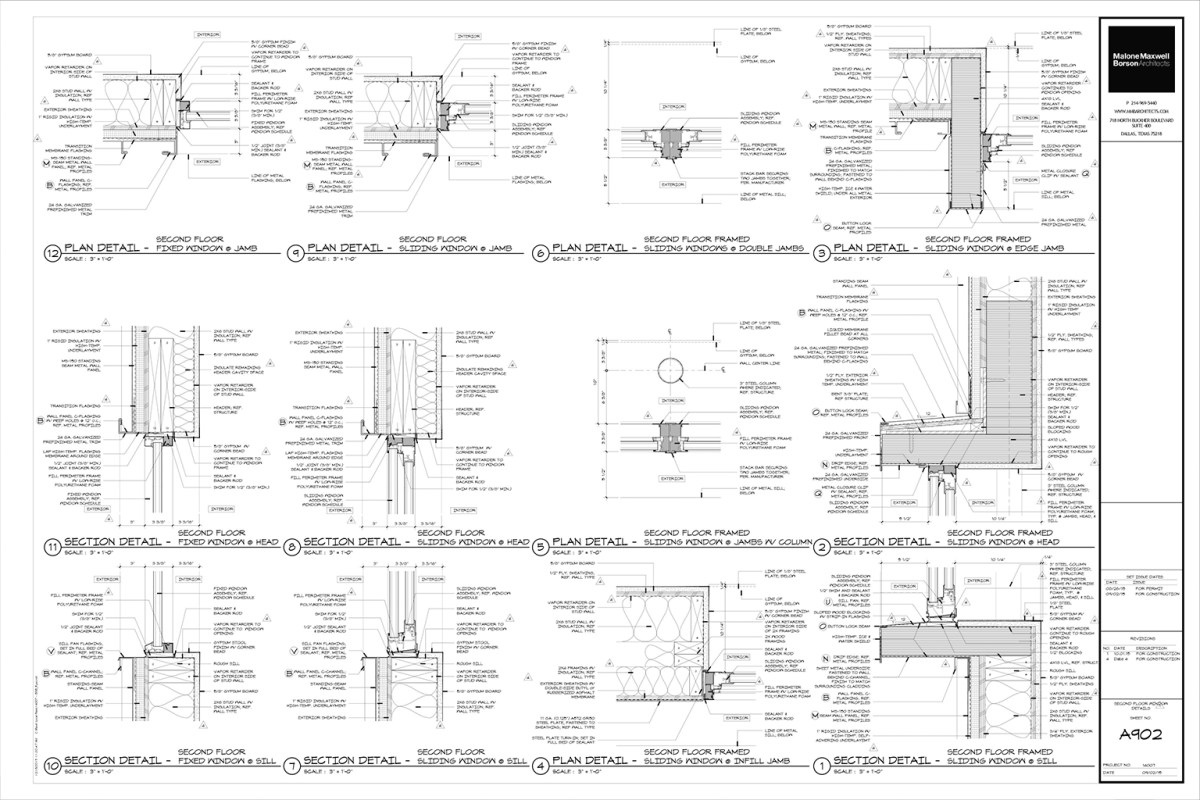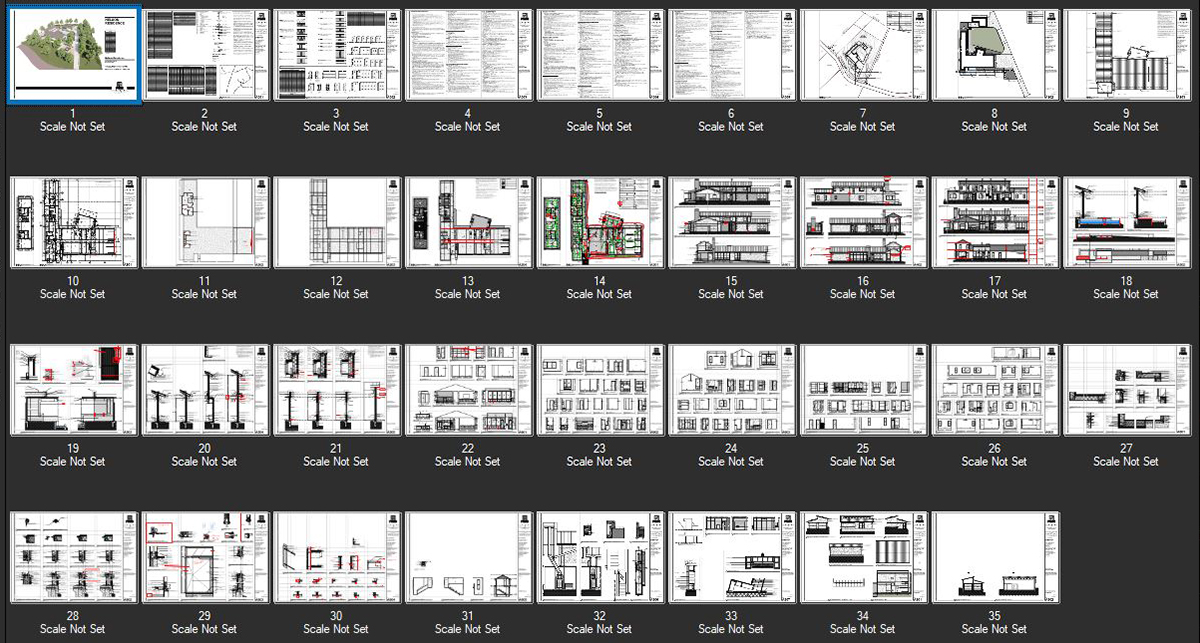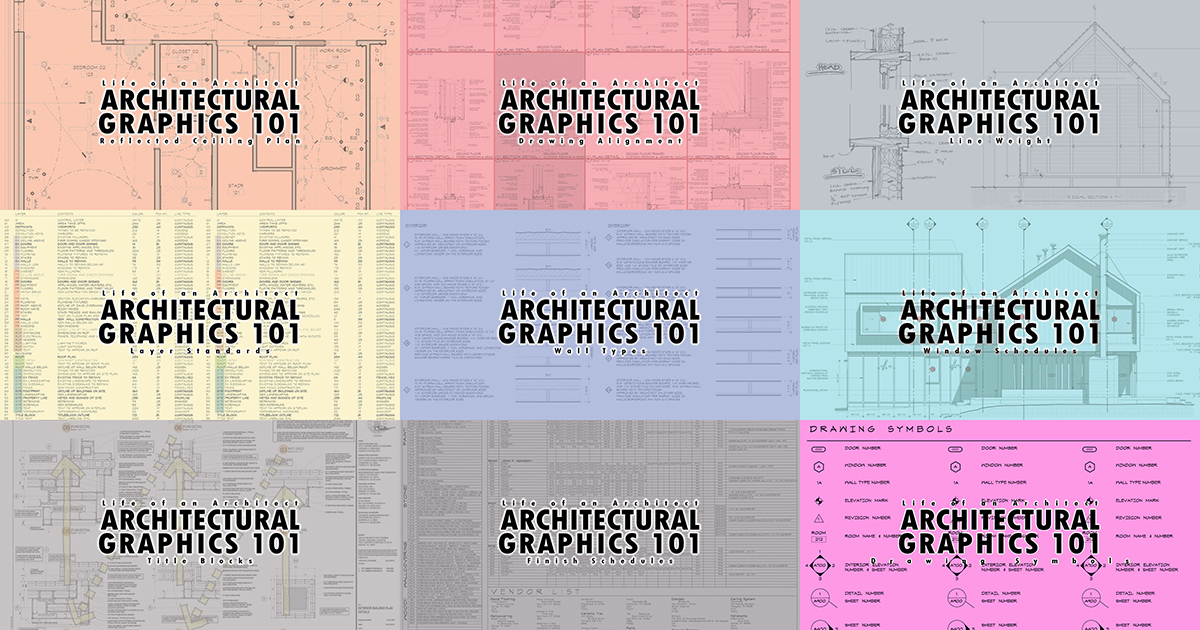A subject matter that we are always dancing around is the creation and preparation of drawings. Fundamentally and at their essence, drawings are at the core of what architects do and they allow us to have a conversation with owner’s clients, colleagues, contractors, developers – everyone in our business – without having to say a single word (assuming you do it correctly). But construction drawings are getting harder, the sets are getting bigger, more complicated, and we seem to have as many issues as ever. Welcome to Episode 099: Construction Drawings
[Note: If you are reading this via email, click here to access the on-site audio player]
Podcast: Embed
Subscribe: Apple Podcasts | Spotify | Android | iHeartRadio | TuneIn

Teaching People How to Draw jump to 2:18
What sort of drawing curriculum exists in architecture schools these days? If I start with the idea of a set of construction drawings, do they have classes that teach people how they are organized and why some drawings exist at one scale versus another? I don’t recall taking any formal or structured classes when I was in school regarding construction drawings. How a set is assembled, how it is structured, what sort of drawings should be included, and where they go in the entirety of the set was a topic never discussed during my education. Everything I know was either learned by looking at other drawing sets once I was out of school and had a job, or someone took the time to discuss it with me during my professional formative years. If there were any knowledge gaps that existed, I simply did what I thought best.
The Architectural Graphics Series jump to 10:25
The most popular posts on this site are the architectural graphics 101 series … it’s not even close. I know that if I put one of those posts together it will be positively received. If I wait too long between posting one I will start to receive emails asking when the next one is coming out.
Reflected Ceiling Plans (January 2017 – this was the first entry into the series with 62,031 views)
Drawing Alignment and Notes (January 2017 with 68,830 views)
Lineweight (February 2017 with 171,254 views)
Layers (March 2017 with 86,851 views)
Wall Types (August 2017 with 142,039 views)
Window Schedules (October 2017 with 201,891 views)
Title Blocks (October 2020 with 54,159 views)
Finish Schedules (January 2021 with 62,064 views)
Symbols (May 2021 with 50,284 views)
Arrows or Ticks (June 2021 with 12,924 views)
I’m not sure why I decided to start writing the occasional post on architectural graphics, but I know that they have proven to be some of the more interesting posts on the site (with very active comment sections). For the most part, these are simply me sharing my opinions about why I draw things the way I do – some of which was taught to me as I have moved from one architectural office to another. Since I have worked in small firms for the majority of my career, I have been given an unreasonable amount of latitude when it comes to how the drawings I prepare appear. I have been influenced by many people but the reality of it is that I simply do what makes sense to me. There are people who are undoubtedly more qualified to teach on this matter but it would appear that those classes don’t really exist or those people are simply harder to find than I am.
For those of you that enjoy this series, the next installment will be coming out in a week and the topic will be “Architectural Cover Pages” … and it will be the sexiest entry in the series yet.

The Residential Studio jump to 21:30
We are going through an exercise in the Residential Studio where we are evaluating what we are drawing and whether it makes sense. The reactions I have been getting to my sets lately have not been entirely positive – which seems like a silly thing to say on this podcast – so maybe I should take a moment and clarify. We prepare a lot of drawings, but it isn’t done for the sake of producing a bigger set. A 4,440 square foot house project that we recently completed had 42 E-size pages in it and had we not stopped to go through a pricing exercise I am confident that we would have added at least 6 more sheets worth of interior details. The contractors we sent these sets to all rolled their eyes and had no qualms expressing their complete lack of interest in (waving hands over the drawings) “dealing with all this” and I am completely frustrated as to why this is happening.
Our intent when preparing construction documents isn’t to weaponize the drawings, we are simply trying to solve as many questions as possible before construction starts. I get that contractors like to do things a particular way – as do I – but I can’t understand why preparing more drawings appears to equate to a more expensive product. If we left things to be “resolved in the field” we are reducing the options we have available for a solution – mostly because there are parameters in place that either can’t be modified or introduce a cost to the process that most people are understandably unwilling to pay. If the only way to get a solution is to tear something out or redo some other scope of work, that normally doesn’t work so now we are left with settling for what’s left.

“More Drawings” does not mean “More Fee” jump to 25:36
Here’s another thing that makes my head blow up, not only am I getting penalized by contractors for drawing too much, but I’m also definitely not getting paid to do this many more drawings. The percentage we charge is 12% of the cost of construction and that includes doing everything – there’s no limit on the number of meetings you get for that fee – you want it, you get it. This is a high-touch white-glove level of service and it comes with unlimited phone calls and meetings, studies, and as many drawings as it takes to convey scope and intent.
I just hired an architect for the residential studio and during the interview process he showed me one of the residential sets he had prepared for a typical project where he was from … it was 25 pages on 11”x17” paper which I think roughly translates into 5 E-size sheets. My most recent set for a similarly sized house was over 800% larger.
Am I crazy? I totally believe that the more I draw, the more fee the contractor gets to charge, which seems like the opposite should occur because I am solving so many things upfront. This level of documentation allows us to consider and solve potential issues on paper while keeping all our options available, rather than discovering that something doesn’t work when you have 20 workers on site all looking at their shoes wondering what to do next.
We have a new series we are going to try on our next episode simply because, just as it was with the hypothetical questions, these “Would You Rather” questions are getting harder and harder to come up with for each show. Since the next episode will be #100, we thought the timing would be excellent. What will it be? Guess you’ll just have to listen to find out.

Would you rather? jump to 47:30
Would you rather have 12 consecutive hours of your day, 5 days a week, broadcast for anyone to watch or 1 hour of you singing or dancing 1 day a week?
The idea of anybody being able to watch what you are doing for 12 hours a day sounds pretty terrible but this question really comes down to whether or not you want people to see the effort and practice, or are you more about the performance? Andrew almost convinced me to switch to his answer but in the end, I know myself well enough to know that one of these answers would be more painful than the other.
Ep 99: Construction Drawings
I am going to tell you that I really enjoy preparing construction drawings … I find the drawings to be beautiful and very pleasing to look at most of the time (probably why I spend so much effort trying to get things like lineweight and alignment in their proper place). The role that these drawings play is incredibly important and I still find it startling that the vast majority of people coming out of school don’t yet seem to have a handle on how to prepare them.
Since I spend a decent amount of time talking about technical drawings and construction drawing sets, I went searching on my site to find something that I thought would illustrate some longevity that I have on this topic and I found the following quote:
This is the real meat & potatoes of this particular job – detailing the building enclosure. (For those of you who are really observant and recognize the window details 1, 2, and 3 – you should note that these have been modified from when they were first published and we have added a layer of 1″ rigid insulation board). I think at current count, we have somewhere in the neighborhood of 63 details just for the exterior wall – and more are on their way.
Is it overkill? Maybe … if you don’t care whether or not everything aligns and matches up around the house. I like to think we take our jobs as architects in the old school manner – we are detailing how the building should be built, not just what it looks like.
The window details I am referring to are the same ones that are in the first image of today’s post (the entire article can be found here: The Cabin Project Technical Drawings) and was one of the projects I focused on for a few years on this site. There are two important takeaways from that quote; first up we have “63 details for an exterior wall ...” which suggests that we documented as many unique conditions as possible, and the second is “we are detailing how the building should be built, not just what it looks like.” which I believe should be singularly engrained into every architect’s brain. Construction documents are the language that is used to convey how a building is to be built and whether you fancy yourself a designer or more of a technologist, construction drawings should be the most important part of your process. This belief is why I prepare drawings to the level that I do, but it also the root source of my frustration when it seems like detailed construction drawings are seen as problematic to the contractors we are trying to work with who seem to think that “more” equals “harder”.
Cheers,


